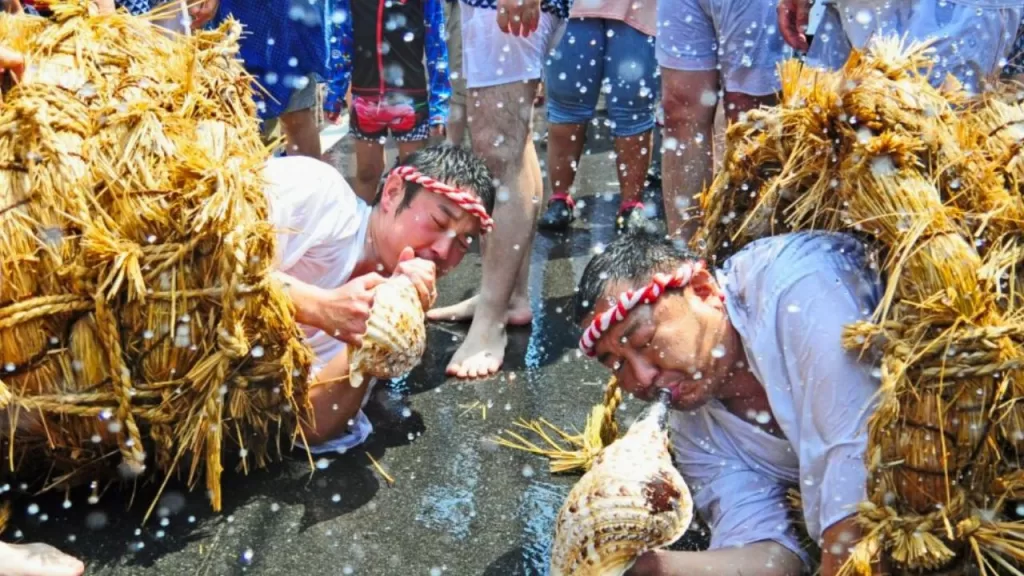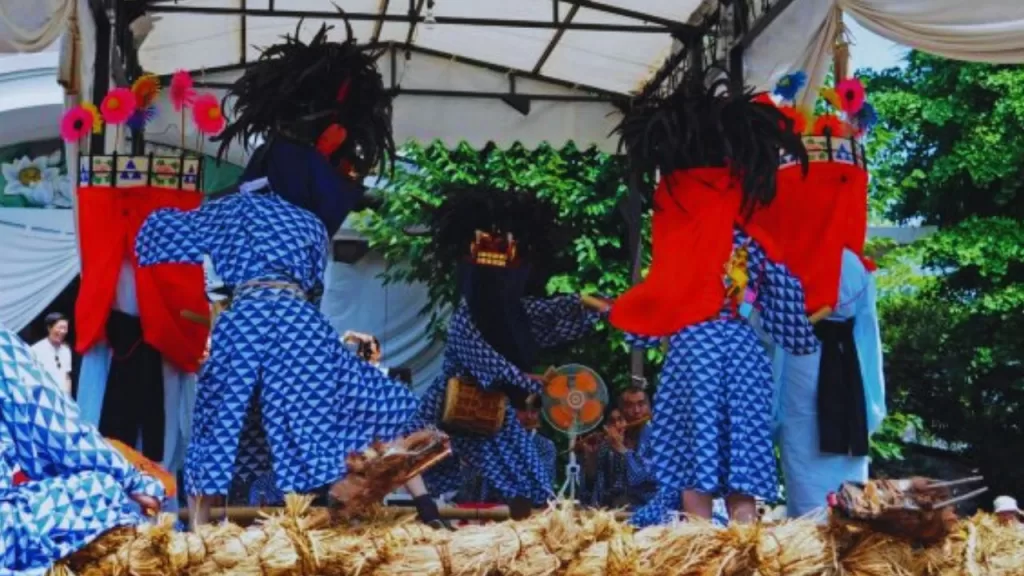Mizudome-no-mai: A 700-year-old Tradition of Rain-Stopping Dance in Tokyo
Experience the ancient elegance and spiritual grace of Mizudome-no-mai, a mesmerizing water-stopping ritual dance performed during one of the captivating Tokyo Events in July, immersing you in a unique blend of tradition and mystique.

Mizudome-no-mai
The Significance and Origin of Mizudome-no-mai
Mizudome-no-mai, a traditional spiritual event that has been around for about 680 years, is believed to hold power to stop the rain. The ritual takes place at Gonshoji Temple on July 10th after the rainy season in Japan has ended, marking the beginning of summer. The dance is dedicated to the dragon god, with participants blowing conch shells and wearing lion masks.
The tradition began in 1321 when villagers were experiencing an intense drought. In desperation, they asked the local high priest to pray for rain. The priest carved a statue of the Inari god and made a straw dragon god. After praying for seven days, he dipped the straw dragon into the sea, immediately resulting in rainfall. However, two years later, constant heavy rain caused flooding and destroyed crops. Once again, they sought assistance to stop the excessive rain. The high priest and local farmers performed a special dance wearing lion masks, which led to the creation of Mizudome-no-mai.
Venue and Accessibility
Gonshoji Temple is situated in the Omori area of Tokyo’s Ota City facing Tokyo Bay—a 10-minute walk from Omorimachi station (Keikyu Line). The temple was originally built as Kaiganji Temple in 1272 and held a strong connection with seaweed fishing culture.
Michi-Yuki Ceremony: Praying for Rainfall
The event begins with the Michi-Yuki ceremony—a procession asking for rainfall where participants play with conch shells while inside straw dragons. The dragons are considered water gods responsible for rainfall.
Spectators along the way pour water on these dragons to pray for rain as they roll down the 150-meter road leading up to Gonshoji Temple. The procession is unique and entertaining for locals and visitors alike.
Mizudome-no-mai: An Offering to End the Rain
Once inside the temple’s grounds, three lions and two “flower baskets” perform dances as an offering, specifically requesting for rainfall to stop. Combining flutes and conch shells, the lion dance creates an enchanting atmosphere echoing ancient traditions.
While originally performed as a chant by the high priest, today’s Mizudome-no-mai has evolved into a dance expressing gratitude towards Buddha due to the Gonshoji Temple’s religious affiliations shifting from the Tendai Sect of Esoteric Buddhism to the Jodo Shin Sect of Buddhism.

A Unique Cultural Experience in Omori, Tokyo
The festival is a must-see event that showcases an extraordinary piece of Japanese tradition and connects Omori’s former way of life with modern times. It offers a rare opportunity for travelers and locals to explore the hidden side of Tokyo.
Witness the enchanting spectacle of Mizudome-no-mai, adding an extra layer of cultural richness to the dynamic festivities of the Shinjuku Eisa Festival, an unmissable Tokyo event in July.”
Mizudome-no-mai is a perfect window into Omori’s rich cultural history and relationship with nature. By visiting this one-of-a-kind festival, you may feel transported back 700 years ago to a fishing village along the Tamagawa River delta region—an area often affected by water damage—while witnessing an intangible cultural asset of Tokyo.